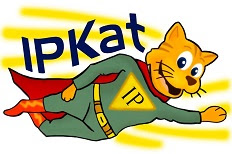In Brazil, July was a prolific month since it saw the 5th national wine to be granted a Geographical Indication (GI). The
application for a GI came in the form of Indicação de Procedência (Indication of Source)and was filed about a year ago by the Associação Farroupilhense de Produtores de Vinhos, Espumantes, Sucos e Derivados (Afavin).
The Brazilian IP Institute (INPI) informs that the formal GI request required a “detailed dossier with the geographical delimitation, the characterization of viticulture (vineyards and wineries), production processes, the characteristics of chemical and sensory quality of the wines, including the evidence of the reputation of the region as a producer of fine wines.”
Mr Tonietto, the technical coordinator of the project explained that this GI difference itself from the others since the enclosed area “corresponds to the historical producing region of moscatéis grapes from Serra Gaúcha, where there is the highest concentration of these varieties in the country.” Adding, he notes that obtaining this GI will enable “hundreds of producers and dozens of wineries established in the demarcated region to put in sparkling moscatéis... still wines that express the originality of this terroir".
Afavin’s president also demonstrates his views on this achievement by noting that the GI emphasizes the moscatéis drinks and that it can be denoted as an positive strategy that values and influences local strengths giving it more acceptance in the domestic market and having an export potential.
The other 4 national wines:
‘Vale dos Vinhedos’ (2002) as an Indicação de Procedência but later on turned into a Denomination of Origin (DO); ‘Pinto Bandeira’ (2010) as a Indicação de Procedência; ‘Altos Montes’ (2012) as an Indicação de Procedência; and finally, ‘Monte Belo’ (2013)also as Indicação de Procedência. All the wineries including this new entry, have received technical and scientific support from Embrapa Uva e Vinho.
Support to GIs in general:
In the same line and promoting GIs, 18 GI 's exhibitors
participated in the ‘Hortifruti Brasil Show & Foods Brasil 2015’ in Curitiba. The event is forum for presentation, discussion and approach to business throughout the supply chain, bringing together different sectors, from the producer to the end consumer.
Representing INPI, Ms Lucia Fernandes attended the event and moderated the panel entitled ‘Market Opportunities and Gastronomy for Products which are differentiated by Geographical Indications and Certificates’.
Some thoughts:
1) While this post acknowledges the agricultural products of Brazil, one cannot forget that Brazil also protects non-agricultural products under the GI system. Examples of GIs from Brazil are: golden grass Jalapão, used to make bags, bowls, jewellery and other pieces; clay pots Goiabeiras; Vale dos sinos for finished leather; opalas preciosas (opal gem); hand-crafted tin of Sao Joao del rei; and even stones! such as Pedra Carijo-Paduana, Pedra Madeira-Paduana; and finally Pedra Cinza-Paduana. [all of these have been reported by this blog].
 2)
2) Despite the fact that GIs are a way of ensuring and protecting the origin of goods and they are mainly used to promote the commercialization of them, there is the need to acknowledge that they can also be used to safeguard and protect a product. For instance: the set-up of mechanism to encourage manufacturing and keeping alive a tradition; establishing regional centres for craftsmanship or creation of civic association of artisans; cultural mapping; helping to mobilize international cooperation and assistance for interested parties; strengthening the mechanisms through which the element is passed on (educational environments); organizing exhibits; stressing the significance of the product in question and thus, acknowledging the community involve; encourage the government to award funding; amongst others.
 3)
3) We need to recognize that the 'GI effect' may often be small or non-existent. For example in the WTO’s 2004 World Trade Report the case of DARJEELING tea was examined and the researchers found that the GI protection given to Darjeeling “has had no noticeable effect on price over a twenty year period”. (Bramley, C., Bienabe, E., and J. Kirsten, The Economics of Geographical Indications: Toward a Conceptual Framework for Geographical Indication Research in Developing Countries). Moreover, Carlos Correa also asserts that “seeking to quantify the current and, particularly, the potential, value generated by the use of a geographical indication is an extremely difficult task.”
4) We also need to be aware of that many countries do lack the capacity to establish the system or do not trust the system. For example, because there are non-transparent public institutions or because farmers do not want to have the central government 'own' the GI in question (Mexico and Venezuela are cases where the GI does not belong to the holders but to the government).
5) There is also the issue that demanding production standards attached to a GI may become a highly politicized, and perhaps dysfunctional process for small business or farmers.
I am sure that I am missing other points, but for today I feel that I leave you with enough hints to develop your own thoughts.
















